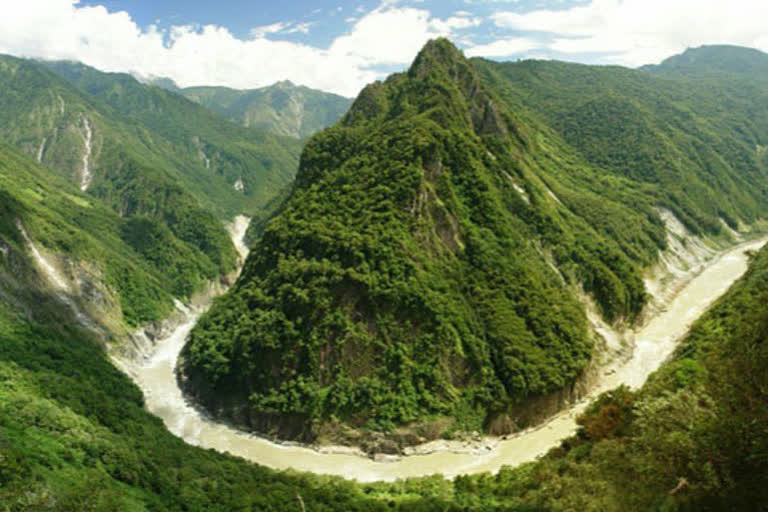New Delhi: Like the Biblical ‘Holy Grail’, hydropower-damming the Yarlung Tsangpo-Brahmaputra river in eastern Tibet is nothing short of the achievement of a miracle for China. With this one move, China will solve several of its problems. Although needless to say, it can only be made possible by overriding objections by India and Bangladesh besides the colossal technological challenge it will pose.
Having already made one 510 MW dam at Zangmo on the Yarlung Tsangpo river operational, China plans several dams across the fast-flowing river which is known as the Siang in Arunachal Pradesh, Brahmaputra in Assam before flowing into the Bay of Bengal as the Padma river in Bangladesh.
The Chinese dam plan has made news for several reasons.
Firstly, it will unleash construction and human activity in a region that is known to be one of humanity’s last pristine zones which has only been partially mapped even now especially in and around the Great Bend region where the river takes a sharp 180-degree turn before entering India.
Secondly, the unprecedented mega-dams will be constructed in a zone of tremendous seismic instability. In case of dam breakage, the effects on the lower riparian countries like India and Bangladesh will be catastrophic with Arunachal Pradesh and Assam expected to suffer the most.
Also read: Indian forces fought PLA with utmost bravery: Rajnath
Thirdly, unless built in a consultative mode, the hydro projects will be a blatant violation of the internationally-accepted rights of lower riparian countries.
Despite the problems and challenges, China has made up its mind to build a network of dams across the river and a few of its tributaries beginning with just two projects. The reasons are simple:
Firstly, it will connect remote regions in Tibet with the core. It will lead to populating the uninhabited regions with consequent migration of Chinese of Han descent in eastern Tibet thereby enhancing control especially in the border areas across India.
Secondly, the Yarlung Tsangpo’s mind-boggling potential will be harnessed to generate extremely cheap power at an unprecedented scale. Besides domestic consumption, China will be able to sell power to Nepal, Myanmar and countries in east Asia.
The state-controlled China government mouthpiece ‘Global Times’ said in a recent opinion piece that the dams would be built at sites where the maximum amount of electricity would be generated. “China also has energy export considerations for building this large hydropower project. High-voltage transmission lines to Nepal are being built up. Once the hydropower project is launched, it will provide much-needed energy to boost the development of China's neighbouring countries,” the article said.
Strategically, this foray will also undercut India’s grand Act East policy which is expected to gain traction soon.
Thirdly, China has embarked on an ambitious mission to cut carbon emissions and increase the use of renewable non-fossil fuels. China plans to peak carbon emissions before 2030 and achieve carbon neutrality before 2060.
Also read: India aims to surpass China in mobile manufacturing: Ravi Shankar Prasad
On Sunday, Xie Zhenhua, Chinese’s top climate advisor, was quoted as saying by China Central Television (CCTV): “It also responds to the international community’s hope of understanding how China’s timetable and roadmap for achieving carbon neutrality are laid out.”
Seen as fighting against climate change, it will open up China’s channels with the US and the West which is currently witnessing considerable belligerence. Also, it will improve and enhance the country’s international prestige.
Fourthly and most notably, the dam projects, once built, will forever remain a bargaining point with India, a rising power that has the potential to challenge Beijing in its own backyard. Calibrating and controlling water availability in Assam and Bangladesh would be much in Chinese hands.



